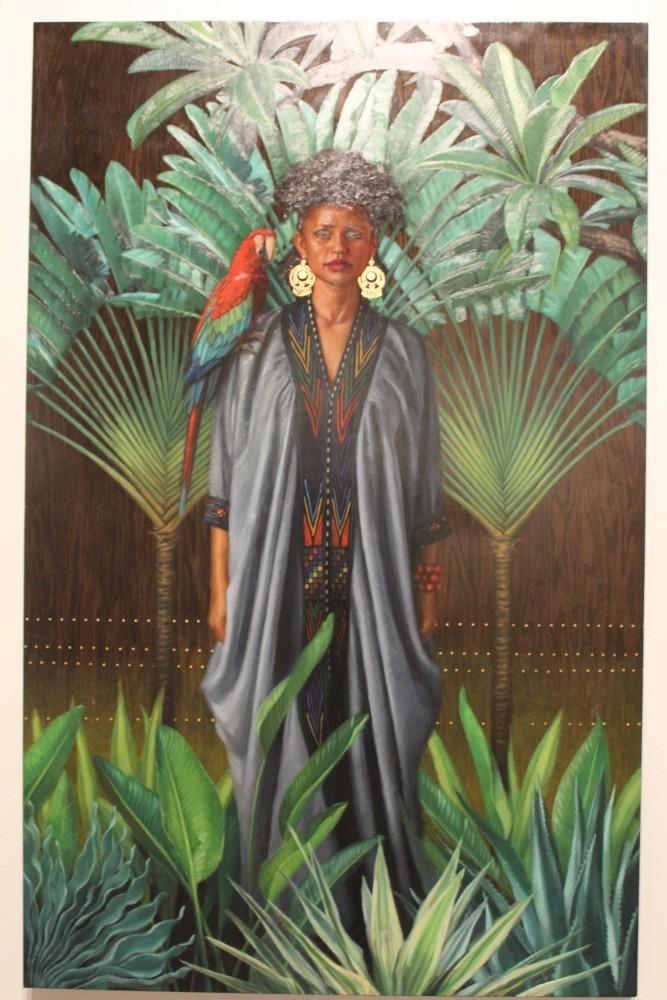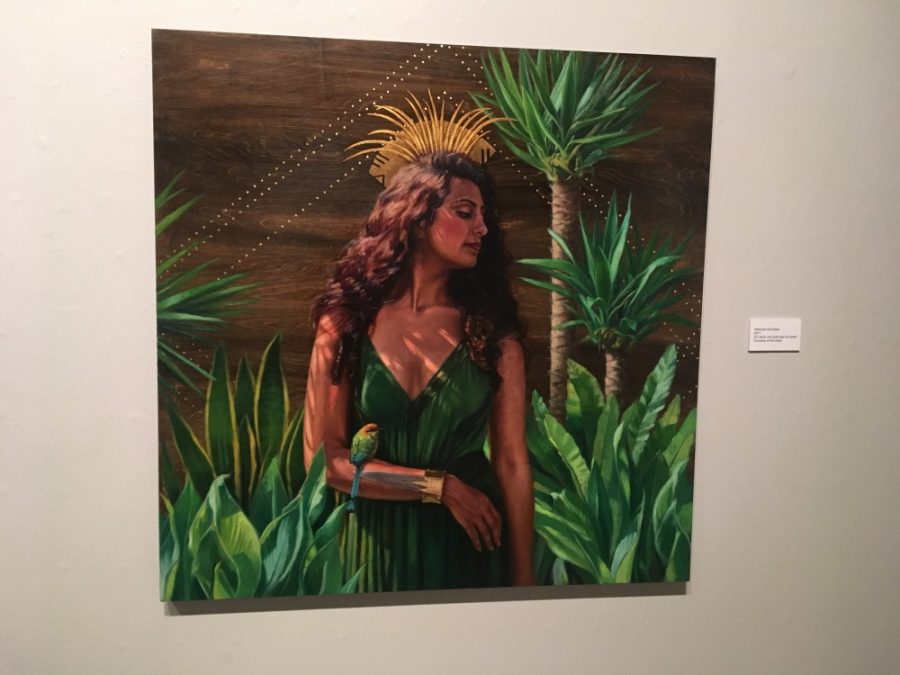On pieces of wooden board that are all different shapes and sizes, environmentalism and feminism collide in an explosion of color.
Based in Toronto, artist Sara Golish explores eco-feminism through her oil painting series, “Birds of Paradise.” The reception for this work was recently held in the Joseph Gross Gallery on Sept. 26, and is open to the public for free until Nov. 14.
Melissa Rendon, a junior studying studio art at the University of Arizona, said it was her second time seeing the exhibit.
“For a woman of color such as myself, the show is empowering,” Rendon said. “The techniques [the artist] uses are very eye-catching.”
In the series “Birds of Paradise,” Golish paints portraits of traditionally oppressed bodies surrounded by vibrant flora and fauna. The exhibit consists of 10 pieces, each one depicting a different message of empowerment for women subjects and for the Earth.
RELATED: Women supporting *Womxn* at Desert Dreams
Ashley Rubin, curator of the show and the senior academic advisor for the UA School of Art, initially discovered Golish’s artwork while she was scrolling through Instagram two years ago. She then reached out to Golish to see if the series could come to the university.
“I told Sara [that] right now the conversation going on on this campus is one about inclusion and diversity, and ‘I think your artwork would fit into that conversation,'” Rubin said. “We just don’t get a lot of diversity in museums and art spaces. I was hoping to rectify that with this art show.”
According to Rubin, the show has three elements in all of the paintings: foliage, birds and women.
First, each painting contains plants that exist in tropical nature, such as birds of paradise, snake plants and palms, which symbolize different things such as resiliency, familial history or appreciation for culture. Second, a species of parrot is included to represent celebration, joyfulness and good things to come. Then, last but not least, is the women of color themselves, standing proud and potent, empowered in their positions on the wall.
“That’s one of the reasons that I thought it would be awesome to bring this show here,” Rubin said. “We don’t see a lot of brown bodies exhibited in this way, even though we’re so close to the border with a diverse population.”
RELATED: Exploring grief through art exhibitions
The art show drew a response from all kinds of people, from all different ages.
Moisés Paiewonsky, an associate professor in the UA School of Music, slowly wandered through the gallery, spending time with each painting.
“I think it’s about empowerment, companionship and paralleling the beauty and exoticism of birds with the beauty and exoticism of people,” Paiewonsky said. “There is detail in these works, and energy that they evoke, that you can’t experience unless you come and stand in front of them.”

Phaedra Farbrook is an 11-year-old who likes to make art with colored pencils. She came to the reception with her parents.
“[The paintings] are really good and super realistic,” Farbrook said. “I guess the paintings are trying to say, ‘preserve nature.’”
According to UA News, the tropical setting in which the women stand creates an eco-feminism lens which calls to mind the traditional connection between women and the Earth. Simultaneously, it alludes to their oppression throughout colonial history.
According to Rubin, Golish’s paintings were on display in Charleston, S.C. before being shipped to Tucson for this exhibition. Golish’s works have also been exhibited in Toronto, Montreal, Denver and New York.
As for the draw of the exhibit as a whole, Rubin said, “If you want to view artwork that’s relatable, beautiful, packs an emotional punch and that’s not intimidating at all, you should come to this show.”
Follow Sunday on Twitter










